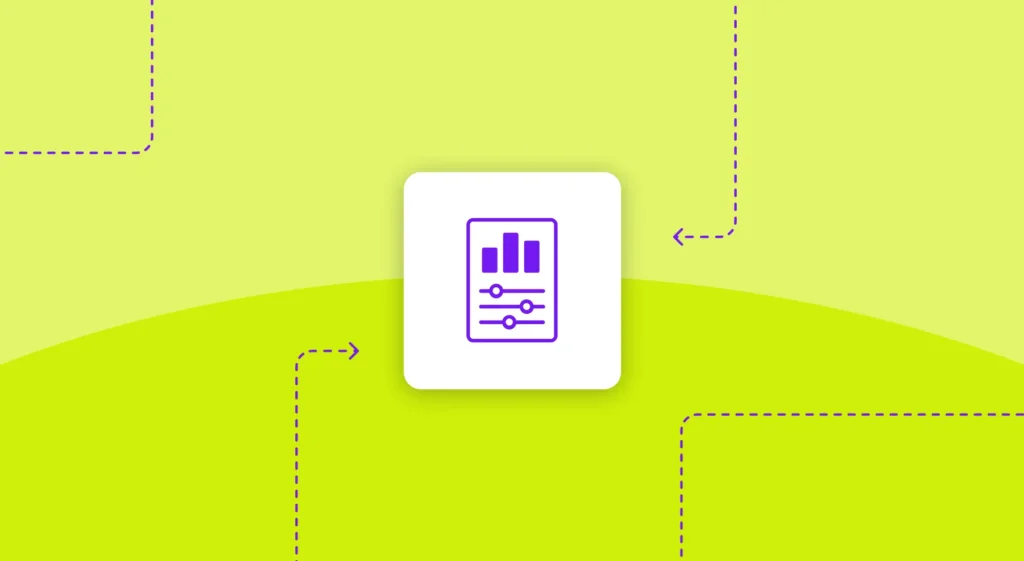If someone on your team was experiencing burnout, would you notice? According to Jellyfish’s 2024 State of Engineering Management Report, maybe not.
The report, which surveyed more than 600 CTOs, engineering managers, and engineers – found a gap between executives and individual contributors regarding perceptions of burnout on teams: While 46% of engineers reported that their teams were experiencing burnout, only 34% of execs reported the same.
Whether you’re a CTO or engineering manager, it’s essential to take steps to proactively identify and mitigate burnout in your teams. Burnout can impact the well-being of your employees and be bad for business, with the potential to impact productivity, deadlines, and employee retention.
That’s why vigilance is important. In this guide, we’ll walk through seven signs that might indicate a developer on your team is experiencing burnout.
What Is Burnout?
What Is Burnout?
The World Health Organization (WHO) defines burnout as an “occupational phenomenon” rather than a medical condition. WHO says burnout results from “chronic workplace stress that has not been successfully managed” and is characterized by the following three dimensions:
- Feelings of energy depletion or exhaustion.
- Increased mental distance from your job, or negative or cynical feelings about your job.
- Reduced professional efficacy.
In other words, burnout is a work-induced experience that can manifest as emotional, physical, and/or psychological symptoms.
7 Common Signs of Burnout
Recognizing and addressing burnout is a complex challenge. People may not react to or exhibit burnout in the same way. Plus, it’s normal for people to have ups and downs in their careers.
The key to identifying burnout is to pay attention to patterns or trends of behavior that seem unusual or out of character. Below are seven common signs that, when combined or if ongoing, might indicate someone on your team is suffering from burnout.
1. Decline in Mental and Physical Well-Being
Burnout can cause both mental and physical symptoms. If someone’s mental and/or physical well-being seems to be declining, it could be due to ongoing work stress. In practice, this might look like:
- Persistent feelings of exhaustion or fatigue, even after weekends, holidays, or vacations.
- Increased frequency of illness or health issues; possibly resulting in frequent sick days or time off.
- Difficulty concentrating or frequent mistakes at work.
2. Decreased Job Satisfaction and Productivity
A survey by SHRM finds that employees experiencing burnout are nearly three times more likely to be searching for another job than those not experiencing burnout. Look out for any significant shifts in productivity that might indicate your team is feeling unmotivated, apathetic, or even dissatisfied with their work. This might come across as:
- A loss of usual enthusiasm or interest in problem-solving and development projects.
- A noticeable decline in quality or speed of work output.
- Increased frustration with routine tasks or team processes.
3. Strained Work-Life Balance and Personal Life
Spending too much time on work can be both a cause and a symptom of burnout. If someone on your team is struggling to maintain a healthy work-life balance, they may be on the fast track to burnout. Watch for signs your team is dealing with chronic work stress, such as:
- Consistently spending long hours at their desk, without breaks throughout the day for meals or socializing.
- Regularly sacrificing personal life and relationships for work demands.
- Expressing guilt or apologizing for prioritizing personal needs over work responsibilities.
4. Signs of Frustration in Communication and Collaboration
According to Healthline, those struggling with emotional exhaustion, such as caused by burnout, may exhibit irritability, irrational anger, and apathy. A developer on your team might be experiencing burnout if they seem suddenly more frustrated with work than usual. This might look like:
- Tense or irritable interactions with team members in the office, on calls, or on Slack.
- Avoidance of regular team meetings, discussions, or project collaborations.
- Decreased engagement with engineering teams or forums, such as refusing to appear on-camera or unmuted.
5. Overwhelmed by Work Environment and Responsibilities
Burnout can come with a deterioration in mental health that impacts self-confidence and sense of worth. As a result, even the smallest, most routine requests can become insurmountable-feeling tasks. Keep an eye out for indications that your team is feeling easily overwhelmed, such as:
- Feelings of being perpetually “on call” or unable to disconnect from work.
- Struggling to keep up with DevOps, project management tasks, or new tech.
- Reporting alert fatigue due to notifications or deadlines.
6. Withdrawal from Professional Growth and Career Goals
One hallmark of burnout is job-related dissatisfaction or cynicism, which in turn can impact job performance. In fact, SHRM finds that employees experiencing burnout are significantly less likely to go above and beyond what is expected of them at work. If software developers on your team withdraw from professional development in the following ways, it may be a symptom of a larger issue:
- New indifference around advancing career paths or seeking leadership roles.
- Declining opportunities to mentor or contribute to team decision-making.
- Lack of engagement with programs, training, or platforms (like LinkedIn) for career development.
7. Negative Perceptions of Current Job and Leadership
It can be difficult to suss out your team’s feelings on leadership or the company as a whole. If your company uses anonymous surveys, however, this is where they come in handy. Review qualitative feedback from surveys or performance reviews to get a sense of how teams feel about the direction of the company and their agency to affect change. Look for things like:
- Issues with the work week structure or remote work
- Dissatisfaction with decisions by specific engineering managers or team leaders.
- Feelings that the workplace is toxic or poor for mental health.
How to Address Burnout
How to Address Burnout
Many companies struggle to effectively address burnout because there’s no easy switch to flip to eradicate stress from teams. In fact, overwork is still a deeply embedded and expected behavior in many engineering jobs and work environments today.
Although it’s up to company leadership to build a culture that values work-life balance and employee well-being, you can take actions to mitigate burnout for your team.
For example, separate studies by Boston Consulting Group (BCG) and SHRM find that employees who report feelings of inclusion and belonging report lower burnout levels. To foster inclusion, BCG recommends prioritizing the following:
- Good access to resources.
- Senior managerial support.
- Psychological safety with a direct manager.
- Fair and equal opportunities for success.
Individuals need to set their own boundaries with work, but it can also be helpful to remind your team about your company’s work-life balance culture and to model a healthy work-life balance yourself.
Remember: It’s important to respect your developers’ boundaries at all times. Whether they’re willing to talk to you about burnout or not, do your best to communicate your unwavering support when you sense that coworkers need it.
How Jellyfish Helps Mitigate Engineering Burnout
How Jellyfish Helps Mitigate Engineering Burnout
Engineering management platforms like Jellyfish can help keep burnout at bay by providing engineering leadership with better visibility into the developer experience (DevEx) and by promoting a values-driven culture.
Improving DevEx to Reduce Burnout
DevEx refers to developers’ overall experience when interacting with the tools, processes, and environments they use to build software. An optimized DevEx often leads to satisfied, productive engineers. A poor DevEx frequently goes hand-in-hand with frustration, turnover, and burnout.
Optimizing DevEx requires quantitative engineering metrics and qualitative feedback from individual contributors.
For example, Jellyfish helps engineering managers see how engineers allocate their effort during sprints. If they consistently see 15–20% of sprint efforts go towards unplanned work, they should understand where and why this work originates, and make corrections to stay focused on the stated goals of each sprint. Otherwise, it could lead to a poor DevEx, with developers feeling stretched thin and/or unfocused due to the influx of last-minute, unplanned requests.
Jellyfish’s DevEx tool also makes it easy to build developer surveys from research-backed templates so engineering leaders can quickly gain actionable insights into the health of their engineering org by team, role, industry benchmarks, and more.
With Jellyfish, engineering leaders gain much-needed visibility to make data-backed decisions that prioritize the developer experience and team health.
Combining a Values-Driven Culture with Data-Backed Leadership
Sometimes, DevEx is about more than just work. Environment, team, and culture matter, too. Engineering leaders can use Jellyfish to encourage inclusion and belonging and drive a values-driven culture.
For example, engineering managers and leaders can leverage Jellyfish to:
- Celebrate and support engineering impact: Help individuals contribute their best by highlighting the value of their work, increasing focus and flow time, improving coaching and skill development, and reducing thrash.
- Ensure everyone has the tools to succeed: Use data and imperial proof to link individual work to business impact and provide more useful, objective feedback, removing bias from the equation.
- Give your teams a voice: Integrate qualitative feedback from your teams. Leverage deliverable comments and sentiment surveys into workflows for greater context into engineering workflows.
With Jellyfish, organizations can attack burnout by empowering teams to work smarter, feel empowered, and deliver better business outcomes.
Kick Burnout to the Curb
Kick Burnout to the Curb
In the world of software engineering, burnout is almost inevitable. However, if you know what to look for, you can take proactive steps to prevent burnout from impacting your team’s health, happiness, and productivity.
Want to see how Jellyfish can help you manage and improve team health? Take a demo for a spin.
About the author

Lauren is Senior Product Marketing Director at Jellyfish where she works closely with the product team to bring software engineering intelligence solutions to market. Prior to Jellyfish, Lauren served as Director of Product Marketing at Pluralsight.





